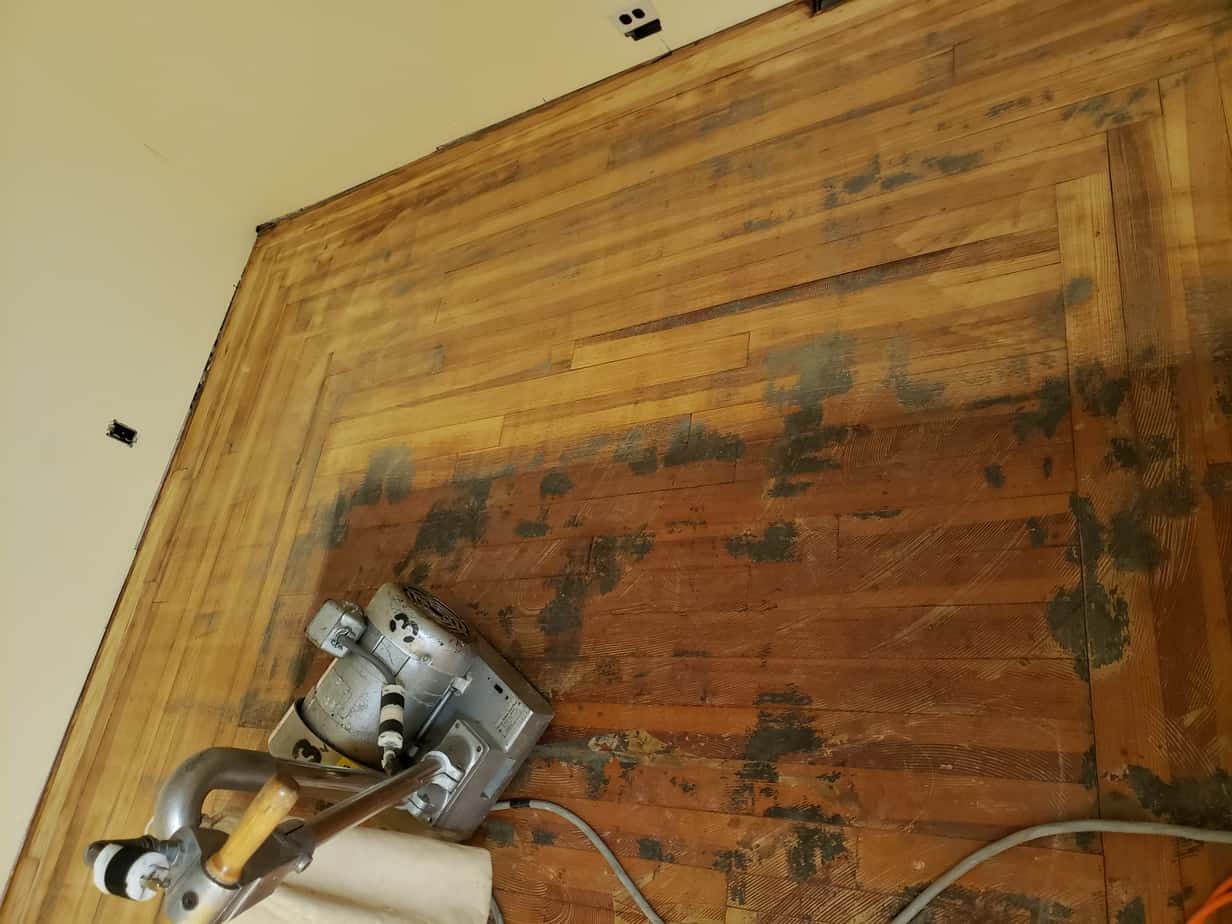
27
FebDispatches in Sandpaper: Send 20-Grit
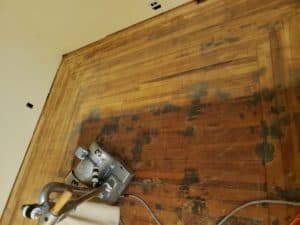 When you buy a fixer-upper house, sooner or later you need to start fixing it up before it can feel like home. And if you’re fixing the place up on a shoestring budget, you find creative solutions and invest sweat equity wherever possible. You start by checking the low-hanging fruit off the punch list, tasks like spackling mysterious holes in the original window frames, replacing lightbulbs, and gingerly tucking the porch door screen back into its frame with a butter knife.
When you buy a fixer-upper house, sooner or later you need to start fixing it up before it can feel like home. And if you’re fixing the place up on a shoestring budget, you find creative solutions and invest sweat equity wherever possible. You start by checking the low-hanging fruit off the punch list, tasks like spackling mysterious holes in the original window frames, replacing lightbulbs, and gingerly tucking the porch door screen back into its frame with a butter knife.
Next you move onto jobs that are a bit more disruptive and take more time and resources, but that go a long way towards improving the look of the house. Painting is a great thing to do at this phase. Taping window frames and baseboards is a time consuming precursor to painting, but is very much worth it if the color of your paint is significantly different than the wood trim, if you’re trying to preserve the natural-wood look of that trim, or if you’re painting an accent wall.
The painting step goes something like this: after taping, grab some paint testers and throw some swatches up on the wall. Abandon the entire color palette and get more testers. Commit to a color scheme and begin transforming the look of your walls. Have so much fun painting that you decide to paint every room in your house. Every. Room. Because it turns out that having one freshly painted room makes the rooms that previously looked just fine suddenly look as dingy and dated as a 1980s B-reel movie. Oh, and remember that wood trim you spent hours taping? Well, that needs to be repainted now too, because the charming antique cream suddenly looks like dishwater splashed at the edges of your crisp and tasteful grey walls.
Be prepared for a few necessities to take priority along the way, like needing to re-plumb a section of the nearly brand new furnace because the previous owners cracked it and now it’s leaking. Also rip out the carpet almost immediately, because on the one hand you have no idea how long it’s been there, and on the other your cat has made it abundantly clear that she smells dog and she is having NONE of it.
If you’re lucky enough to be surprised by hardwood floors under that nasty old carpet and if you’ve come this far on your fixer-upper journey, then it is well within your reach to refinish those floors yourself and bring them back to life. And if you’ve been putting off refinishing the floors for several months, give yourself a deadline by ordering furniture for those rooms that’s too big to fit through any doorway except the front door.
In all seriousness though, when faced with the logistics of refinishing your own floors, the project can seem huge and daunting. With a plan in place, advice from experts, and more than a little moxie, the whole job can be done in a weekend. To prepare for refinishing your floors, you’ll want to patch any broken or damaged boards and pull out any lingering carpet staples. With a hammer and nail punch, go all over your floor and pound down any nails that are at or above the surface of the existing wood; refinishing floors yourself can save a lot of money, but damaging the rental equipment on protruding nails would be very expensive.
Being a DIY-extraordinaire, you may be tempted at this point to use a hand sander to sand along the walls. I implore you resist this urge and spend the extra $25 for the room edger rental, since it will save you hours of labor and is really fun to use. Also invest in ear protection, a set of cushy comfy knee pads, and extra-strength Tylenol. If at all possible, try to find a local family-owned rental shop to rent the floor sanders and refinishing accoutrement. Big box hardware stores will also rent the necessary equipment, but by working with professionals who have specialized in this sort of work for years you’ll get expert advice and tips that make the job that much easier.
Top tip: if you’re refinishing a floor that still has an old stain and or finish, and that also has mastic or glue from old floor tiles, skip all other grits of sandpaper and go straight to the heavy-duty 20-grit paper. The person renting you the equipment may advise that you can get away with 36-grit alone, and it’s true that 20-grit paper is so intense that you really cannot let the machine stop moving or else you’ll wear a groove in the wood, but good gracious does it ever work like magic.
My final advice is that even though the sawdust catchment bags on these industrial sanders are actually quite good at gathering nearly all the sawdust, you will need to dust mop your walls after the project is done. Also your windows, baseboards, and ceiling beams. You may want to hang sheets over fixtures that can’t be moved, and over open doorways. Other than that, have fun and make sure you still have a way to get to the bathroom when the polyurethane is drying on your beautiful new floors!
Luckily the library has much more detailed and professional advice than mine when it comes to home improvement and DIY projects. Though dated, Grand Finishes for Walls and Floors by Matt Nikitas has indispensable sage advice like the sort you’d get if your dad were a finish contractor helping at every step of the process. Installing & Finishing Flooring by William Spence is worth a look, as is The Complete Guide to Flooring by Black & Decker. For more general home maintenance and DIY how-to’s, try How to Fix Anything by Popular Mechanics, The Complete Photo Guide to Home Improvement by Black & Decker, and The Ultimate Guide to Home Repair and Improvement by Creative Homeowner. If you’re not quite ready to roll up your sleeves and are looking for inspiration, we have tons of books about decorating, organizing, and refreshing your space and furnishings, such as Weekend Furniture Facelifts by Helen Carey and Styling with Salvage by Joanne Palmisano. I also highly recommend a few DIY magazines available through Flipster, such as Do It Yourself, The Family Handyman, Better Homes and Gardens, and Flea Market Decor. There are even more magazines available through the Libby app by Overdrive, such as HGTV Magazine, Country Living, Elle Decor, Good Housekeeping, and House Beautiful.
Good luck, fixer-uppers! As Red says in the classic Canadian comedy, The Red Green Show, “I’m pulling for you. We’re all in this together.”
Liz Reed is the Adult Services Librarian at the Morrill Memorial Library in Norwood MA. Look for her article in the February 27, 2020 issue of the Transcript and Bulletin.
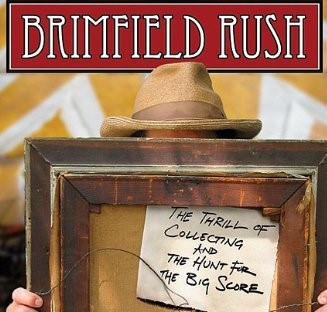
20
FebTomorrow’s Treasures
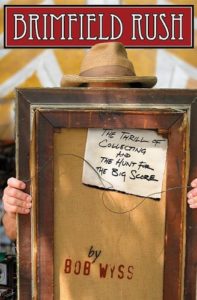 My father recalls the time he was in the middle of an intense bidding war with another antique dealer over an item. He was in an auction house in Acushnet, Massachusetts and was sitting in the way back of the spacious barn that had been converted into an antique auction house. He was smoking a cigarette with the other smokers (it was the early 90s – that was allowed back then!). Though he could not recall what the item he was bidding on was, he remembers he knew he wanted it for his antique store, but was being constantly outbid by another dealer who was in the front row of the auction house.
My father recalls the time he was in the middle of an intense bidding war with another antique dealer over an item. He was in an auction house in Acushnet, Massachusetts and was sitting in the way back of the spacious barn that had been converted into an antique auction house. He was smoking a cigarette with the other smokers (it was the early 90s – that was allowed back then!). Though he could not recall what the item he was bidding on was, he remembers he knew he wanted it for his antique store, but was being constantly outbid by another dealer who was in the front row of the auction house.
Meanwhile, I was in my usual stomping ground: the kitchen area, watching “Big Bill” the auctioneer moderate the bidding war between my dad and the other bidder. I loved going to antique auctions with my dad because the people at the auction house treated me like a prince. Everyone was really nice and they would let me play with some of the (less valuable) antique toys, and Big Bill would let me have a cheeseburger on the house. To this day, my mom and I still talk about how good those cheeseburgers were. Big Bill was a presence. He was loud and totally in charge of the auction that night. I remember that for less valuable items, he would start the bid at $1 and would say “let’s start this bid at a bawk bawk bawk bawk” and start imitating and clucking like a chicken. I was seven at the time, and this silliness NEVER got old with me.
My dad would not be outdone, but abruptly during this bidding war, Big Bill yelled out “Tony, are you and your wife speaking to one another?” My dad was totally perplexed; why would Bill ask this kind of personal question in the middle of an intense bidding war?” Bill, in his booming voice said “because you keep bidding against your wife!!” The mystery dealer in the front row? That was my mom. They were bidding against each other on the same item, and did not even know it. EVERYONE got a good laugh. Bill said “Oh… and Tony” then slammed the gavel down, ending the bidding war “Your wife wins!”
Further proof that my mom always wins.
My mom and dad opened their antique store, “Tomorrow’s Treasures” on Billings Road in Quincy, Massachusetts in 1990. The library was an important place to my dad back at this time, because it gave him free access to books on antique items and pricing. This was of course during a time before the internet was as established as it is today. To be effective in the antique business at the time, you had to know what your items were worth, and this meant a mix of doing your homework, experience, and, as my dad put it, embracing the “thrill of the hunt.” He explained “I loved the thrill of the hunt. Just going out and searching for items that were unique and different. It’s so exciting when you come upon something special, something one of a kind, and then owning it. The fun is that you never know what you will find, or where you will find it. Sometimes you find it at yard sale, or an auction, or at flea markets, you just never know.”
I hope you will enjoy the interview I conducted with my dad about his experience owning an antique store in the 90s. The Library continues to be a place of great information and resources for both the professional antique dealer and those who are curious about antiques in general. Be sure to check out the resources at the end of this article for more information!
Brian: What inspired you to become an antique dealer?
Tony: Before enlisting in the Marines during the Vietnam War, I was an accordion teacher. When I got out of the Marines I thought I would go back to teaching, but interest in the accordion had greatly diminished after the war, so I went to work with your grandfather at “DeFelice Movers” in Waltham. Though we were a moving company, we also doubled as a used furniture store as well. Back in the 80s students didn’t dorm like they do today, they group rented apartments, which meant our #1 customers were Brandeis University students looking for affordable used furniture. Along with the used furniture, I started to buy antiques, and I realized we could not keep the stuff in the store! When your grandfather sold DeFelice Movers in 1987, I decided I wanted to go into business. That’s how I opened “Tomorrow’s Treasures” in Quincy.
Brian: Any particular items you were most proud to acquire?
Tony: Your mom and I got this Hoosier kitchen cupboard that was amazing. Most Hoosier cupboards were made of pine or oak at the time. The one we owned was green oak, so it still retained some of the natural green that was found in the oak it was made of. It had been done over a bit, but the guy who had restored it was a true professional. I had found the piece at the Brimfield Flea Market and I remember paying around $800 at the time. I loved it, but I was a salesman, so of course I wanted to turn a profit. I recall a woman in Carver was interested in it, so I put it on the truck and drove it out to her to see if she was really interested. When she saw it, she just loved it and said to me, “get that in my house and do not damage it!” She paid $1,500 for it, a $700 profit.
Brian: Ah! Brimfield. I remember we used to camp out in the back of a moving truck to go to that. Tell me about your experiences at the Brimfield Flea Market.
Tony: I believe it is the largest, if not, one of the largest flea markets in the U.S. Yes, we would set up a spot for about 4-5 days in a row, and as you remember, we would sleep in the back of a moving truck. If you had the goods, there is no way you could NOT make money in Brimfield. Your mother and I would clean the house in Brimfield. People would come from all over the Nation to see your items. Because of this, you would get people interested in items that might not necessarily be popular in New England. For example, at the time, I found people from California were really interested in “Empire Style” couches and chairs, perhaps because they were not as common in the West. Also, some items had international interest. I used to deal with a Canadian dealer who loved Mahogany sets. I had a solid mahogany dining room table that had about 4-5 leaves. The chairs had a Queen Anne style back style with buttercup legs. There were about 12 chairs. He bought it on the spot. I guess Mahogany furniture was in vogue in Canada at the time.
Brian: Any advice you would impart on people interested in the antiques business?
Tony: Never bid against your wife! (he laughs). You start to learn a bit at auctions as you go to them, and realize that sometimes the person you are bidding against might actually be the seller of the item trying to up the price of their own item. Let’s say I put something into the auction for $200 but it’s really worth $300. Let’s say the item is about to sell for $250 and I put in a bid for $300 to try to up the price, I would bid on my own item, hoping to at least break even, or at best, illicit a bidding war to make more money. Yes, it’s possible that no one else would bid, and I would effectively have not only bought my own item, but would have lost some money (during that time it cost $20 to put an item to bid) but it’s much less of a loss than the $70 loss I would have incurred had it sold for $250. If bidding, set a max price in your head that you will pay for the item and do not go over. Remember, the person you are bidding against just might be the owner.
Some items might not be worth much to some, but are worth quite a bit to a particular collector. For example I had a customer who loved Elvis, but before the internet, you had to go to auctions, flea markets, or stores to acquire Elvis memorabilia. She worked many hours, so she did not have the time to go out and find items for her collection. If I found anything Elvis-related that I knew she did not have, I would buy it on the spot. She would buy any Elvis collectible she could get her hands on. Some items have a particular niche buyer.
Brian: So, what ended up happening to the store?
Tony: We were in business for about 3 years, from 1990-1993. Your mom and I worked so so hard, but the store, in the end, was a financial disaster. Times had changed and people were no longer as interested in antiques. You could get something more modern looking (but cheaply made) at a cheaper price. People become more interested in new things.
Brian: Do you regret opening it?
Tony: No, not at all. First off Bri, if you don’t try something in life, you will never know if you could have been a success or not. Your mother and I worked hard, and we learned so much, but we also made some truly great friends who made a big impact on our lives. What I lost financially, I made up in friendships. The real “treasure” in “Tomorrow’s Treasures” was the experiences we had, the thrill and fun of the hunt, and especially the great people we met along the way.
Ready to start your journey into the world of antiques? Check out the following titles at the Morrill Memorial Library and start your collection today.
Miller’s Antiques Encyclopedia, by Judith Miller
The Kovels’ Antiques and Collectibles Price List, by Ralph and Terry Kovel
Brimfield Rush: The Thrill of Collecting and the Hunt for the Big Score, by Bob Wyss
Brian DeFelice is the Information Technology Librarian at the Morrill Memorial Library in Norwood, MA. Look for his article in the February 20, 2020 issue of the Transcript and Bulletin.
Anthony DeFelice Jr. is a retired U.S. Marine, antiques dealer, and accordion player in Plymouth, MA
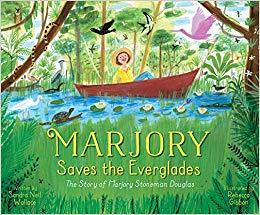
13
FebTales From the Swamp
 If you study a map of Florida, you’ll see that most of the southern tip is a remote green wilderness with few roads or cities. Except for that significant development of cities and towns along both of Florida’s southern coasts, there are just a few east-to-west highways that connect Boca Raton on the Atlantic to Naples on the Gulf. One of them, Highway 41, starts in a downtown neighborhood in Miami and veers north at Everglades City, bypassing Marco Island, skirts the Gulf Coast cities of western Florida, and then heads north to Michigan. This Tamiami Trail passes east from Miami to the west and north to Tampa. Along the Everglades, it is known as Alligator Alley, with one lane in each direction. Alligators, commonly seen in the waters near the highway, share this land along with hundreds of other animal and bird species.
If you study a map of Florida, you’ll see that most of the southern tip is a remote green wilderness with few roads or cities. Except for that significant development of cities and towns along both of Florida’s southern coasts, there are just a few east-to-west highways that connect Boca Raton on the Atlantic to Naples on the Gulf. One of them, Highway 41, starts in a downtown neighborhood in Miami and veers north at Everglades City, bypassing Marco Island, skirts the Gulf Coast cities of western Florida, and then heads north to Michigan. This Tamiami Trail passes east from Miami to the west and north to Tampa. Along the Everglades, it is known as Alligator Alley, with one lane in each direction. Alligators, commonly seen in the waters near the highway, share this land along with hundreds of other animal and bird species.
A more well-known highway, Interstate 75, skirts the northern parts of the Florida everglades and Big Cypress National Preserve. It travels through Fakahatchee Strand State Preserve before it, too, turns north through western Florida, before it reaches West Virginia forests and eventually crosses the land between the Great Lakes and ends at the Canadian border.
Most travelers take either of these two routes across the vast glades of Florida. The hardier traveler, however, travels southwest from Homestead, passing through Everglades National Park along State Highway 9336 and deep into the swamp at the southernmost tip. Those riskier adventure-seekers can then go to the ghost town of Flamingo, or travel along the 99-mile Everglades Wilderness Waterway. This watery land is also known as the Marjory Stoneman Douglas Wilderness. It is only accessed by kayak, canoe, and shallow-draft powerboats through a system of interconnected creeks, rivers, bays, and lakes. It is recommended that boaters relying on paddles plan eight days to travel – one of the passes is navigable only at high tide.
The Florida Everglades was originally a 14,000-square mile expanse. Through a series of diversions, the Everglades has shrunk to 4,000 square miles. The 1.5 million acres known as Everglades National Park protects the 20% of the original area.
While most of America’s national parks are established to preserve the beautiful and unique geography of the United States (such as Yellowstone, the Grand Canyon, Death Valley) the Everglades National Park was created to protect a fragile ecosystem. Lake Okeechobee to the north feeds a river that flows through the glades into Florida Bay. I had always envisioned the Everglades as a dark and murky, wet and wild place much like a rain forest. Instead, I have learned it is a flowing river and provides a perfect habitat for the American crocodile and other reptiles such as alligators and snakes, the Florida panther, the West Indian manatee, 350 species of birds and hundreds of types of fish.
In 1882 the first plans to drain these Florida wetlands began as somewhat well-intentioned uses for agricultural and residential development. At that time, Miami was merely an eastern outpost. Once a land inhabited by the Tequesta – a Native American tribe that occupied this area along the southeastern Atlantic coast – missionaries and colonists were attracted to the land and its long growing season. When railroad tycoon Henry Flagler connected the Florida East Coast Railway to Miami, the population of the town was a bit over 300. After World War II, Miami’s population soared to nearly 500,000, similar to what it is today. However, the northern and southern metropolis of Miami boasts over 6 million residents, the seventh-largest in the United States.
Fortunately for Florida, environmentalists intervened well before this population boom to protect the vanishing Everglades. The foremost of those was Marjory Stoneman Douglas.
Many of us are familiar with the name Marjory Stoneham Douglas. On Valentine’s Day two years ago, a deranged gunman killed 17 children and adults at the Marjory Stoneman Douglas High School in Parkland, Florida. That school had opened on Douglas’ 100th birthday in 1990. An elementary school in Miami-Dade County is also named after her, along with a municipal building, and a 15-minute orchestra piece, Voice of the Everglades. But, there is so much more to attribute to Douglas, including saving the Everglades.
Marjory Stoneman Douglas has roots in New England that I never knew about until my Everglades reading began. While she was born in 1890 in Minneapolis, after the divorce of her parents at age six she moved to her mother’s family home in nearby Taunton, Massachusetts. At the age of 17, she won a Boston Herald prize for a short story. A stellar reader, writer and student, she left home for Wellesley College at the age of eighteen and graduated in 1912.
Several years later, after the death of her mother, (and a failed marriage to a scoundrel named Kenneth Douglas) she moved to Florida. There she began writing for a newspaper that her father published – later to be named the Miami Herald. It was through her journalistic voice that Marjory began changing the history of Florida.
Her early activism included women’s suffrage and public health. Her efforts turned to environmentalism early in the 1920s when she was in her thirties when she joined the board of the Everglades Tropical National Park Committee. In 1947, she wrote The Everglades: River of Grass, the essential book written about the Everglades.
The story of Florida, the terrible mismanagement of natural resources, the Big Sugar pollution of Lake Okeechobee, the rampant abuse of the land, and the corruption of politicians, is a larger story than this column can begin to describe. Yet, the work of Marjory Stoneham Douglas has saved a portion of the Florida Everglades for generations to enjoy.
If you are interested in learning about this magical wilderness and its rescue, read The Swamp: The Everglades, Florida, and the Politics of Paradise (2007) by Time correspondent Michael Grunwald. In another great book, Liquid Land: A Journey through the Florida Everglades (2004), author Ted Levin describes his many journeys through the Everglades, with profiles of those who attempted to coerce or steal the Everglades for development – and those who have worked to win it back.
If you want a serious, and sometimes hilarious, account, read Hodding Carter’s Stolen Water: Saving the Everglades from Its Friends, Foes and Florida (2005). It’s a great way to begin an education into the story of Florida and the abuse of its land, particularly the Everglades wilderness.
Jack E. Davis’ biography of Marjory Stoneman Douglas, An Everglades Providence (2009), is a 700-page tome dedicated to the virtues and actions of this amazing woman. In 1993, five years before her death at age 108, Marjory was awarded the Presidential Medal of Freedom, the highest civilian honor granted by the United States. The citation read “Grateful Americans honor the Grandmother of the Glades by following her splendid example in safeguarding America’s beauty and splendor for generations to come.”
A lovely children’s picture book biography will be published this September. Marjory Saves the Everglades will be an important book to share with every young environmentalist. As Marjory and other preservationists cry, “The Everglades is a test. If we pass, we get to keep the planet.”
Charlotte Canelli is the Director of the Morrill Memorial Library in Norwood, MA. Look for her article in the February 13, 2020 issue of the Transcript and Bulletin.

7
FebNew Year, New Me?
 In my last article, I claimed I avoid New Year’s resolutions like the plague. Now that we’re a month into 2020, I have changed my tune. My motto has also been “All things in moderation” and I think I can apply that to the “new year, new me” spirit of January. I’ve correctly observed I’ll never be the type to make a massive change on January 1st but I could be the sort of person who makes small changes which add up to a sizable difference over the year.
In my last article, I claimed I avoid New Year’s resolutions like the plague. Now that we’re a month into 2020, I have changed my tune. My motto has also been “All things in moderation” and I think I can apply that to the “new year, new me” spirit of January. I’ve correctly observed I’ll never be the type to make a massive change on January 1st but I could be the sort of person who makes small changes which add up to a sizable difference over the year.
Instead of “resolution,” I choose to use the term “modification.” This term is less radical and scary than resolution and thus, makes my goals feel more attainable. I’m not resolving to undertake a new lifestyle, I’m just making a few adjustments to the one I already have. I also try to stay away from trends when considering little changes at the start of the year. It seems like the Internet is always ready to champion the latest health or diet fads along with the best way to organize your time, be happier, less stressed, a more effective parent, a better employee, etc. The self-help industry is booming and librarians certainly see this reflected in the demand for books on this topic. Librarians are constantly fielding requests for books on how to improve your life and updating our self-help collection with new titles.
The best way to make small, effective changes for me has been to reflect on any areas of my life where I’m dissatisfied and brainstorm solutions that fit into my everyday routine. For example, exercise hasn’t been a regular part of my life for an unhealthy amount of time. Instead of committing to a boot camp fitness class four times a week at 5:00 AM or challenging myself to run a half marathon by the spring or even purchasing an expensive gym membership, I realized I could fit thirty to forty-five minutes of walking into my life as part of my morning routine.
Another key strategy when modifying my life comes from the idea of always having a backup plan. In my example above, weather or other events or even lack of motivation could conspire to keep me from my daily walk. How can I keep myself from feeling like I’m failing to meet my modest goals even if I don’t walk in the morning? I was recently bemoaning this to a colleague when she reminded me of the power of Plan B. Having a backup plan if Plan A fails has allowed her to keep on track with her fitness goal of incorporating more physical activity into her days. If she fails to exercise, she can always pop on a short fifteen minute YouTube fitness video in the evening. It’s only fifteen minutes but it keeps her on track.
Aside from fitness, becoming more organized in my personal life is a major goal in 2020. I’ve often tried to keep daily calendars and to-do lists without much success. I’ve tried multiple apps on my phone and many organization systems that have failed me. Even though I try to stay immune to trends, I finally caved and started a bullet journal at the end of 2019. With the zeal of a convert, I can say my life has been changed.
Ryder Carroll, a digital product designer, came up with the idea of a bullet journal when facing the same problems with to-do lists as I had. A bullet journal is a flexible catch-all system for to-do lists, a planner, a calendar and any other organizational scheme you need for special projects. Mr. Carroll set up a notebook for rapid logging on tasks, events, and other thoughts that are categorized by a simple bullet system to let the user know what’s been done, what needs to be done, and what’s happening when. His revolutionary book, The Bullet Journal Method, is a beginner’s guide to setting up this system to not only keep track of one’s life but also to help people focus on what is truly important in their lives.
Carroll sees bullet journaling as more of a mindfulness practice than just an organizational tool. By writing things down, we remember them more fully and by transferring tasks, dates, events, and thoughts from month to month, we hone in on what goals we want to accomplish. For people who are intimidated by reading the whole book, you can also set up an easy bullet journal for yourself after watching the five minute YouTube video available on the bullet journal website.
Another small change I’m attempting in 2020 is to make improvements to my diet. I’m not going on a diet. Studies have shown that most diets aren’t effective and don’t help the dieter make lasting changes to his or her weight or health. I’ve noticed several things in my life that prompted me to make this small adjustment. As the household cook, I’ve realized that I’m in a dreaded cooking rut, the place where I find myself making the same things over and over again for dinner. Some of these items are healthy, some are not. None of them are inspiring anymore after being repeated week after week. I’ve also realized my diet has become more meat-heavy than necessary and lacking in fruits and vegetables.
I realized I didn’t need to pick up any new diet books to unearth different recipes and shake up my dinner menus. I already own a formidable collection of cookbooks that largely go unused and are ripe for rediscovery. I have started to comb through two old favorites, Cooking Light: Fresh Food Fast is helping find tasty recipes with fewer calories that still satisfy everyone. This cookbook also goes the extra mile and includes a side recipe with each entree to take the guesswork out of meal planning.
In order to focus on adding more fruits, vegetables and healthy grains to my diet, I’ve pulled out The Complete Vegetarian Cookbook by America’s Test Kitchen. This book focuses on recipes that put non-meat dishes front and center so you don’t feel like you’re eating a side dish for a main course. So far, the Poblano and Corn Empanadas have been a huge hit in my house.
2020 isn’t the year of the big change, it’s the year of the small adjustment, the fine tuning of an already happy life for me. I applaud everyone who can transform their lives by using January as a springboard to launch themselves toward positive change. But it’s not for me. We don’t always have to burn everything to the ground in order to start something new. The best resolution, after all, is one that you will stick with through the whole year.
Kate Tigue is the Head of Youth Services at the Morrill Memorial Library in Norwood, MA. Look for her article in the February 6, 2020 issue of the Transcript and Bulletin.

30
JanMy Journey to Not-Motherhood
 The doctor slid a piece of paper across the table showing a line graph that looked like it represented a stock market crash- a jagged line rising, peaking, falling, then plummeting. The line represented my fertility. She explained the graph with facts, numbers and percentages, but the image of that nose-diving line got the point across. The doctor explained that if I did everything right- took hormones, tracked my ovulation, timed my pregnancy attempts carefully- I’d still only have a 5% chance of getting pregnant, and even if I did, there’d be a 60% chance of miscarriage.
The doctor slid a piece of paper across the table showing a line graph that looked like it represented a stock market crash- a jagged line rising, peaking, falling, then plummeting. The line represented my fertility. She explained the graph with facts, numbers and percentages, but the image of that nose-diving line got the point across. The doctor explained that if I did everything right- took hormones, tracked my ovulation, timed my pregnancy attempts carefully- I’d still only have a 5% chance of getting pregnant, and even if I did, there’d be a 60% chance of miscarriage.
Preliminary tests showed nothing physically wrong with me or my husband. The doctor was essentially telling me I couldn’t have kids because I was just too old. I quickly learned that telling people about the prognosis only made me feel worse. Suddenly everyone had encouraging words about women bearing children late in life. Everyone knew somebody in their mid-forties who had a healthy baby, or someone diagnosed as infertile who wasn’t after all, or a couple who began the process of adoption only to get pregnant soon after. Good for all of those people, I thought, but what about the women who received similar news to mine, and did not go on to have a “miracle” child? I could not count on being one to defy the odds.
In vitro fertilization (IVF), I learned, can cost tens of thousands of dollars and you don’t get a refund if it doesn’t work. Sure, you can’t put a price on your future child’s existence, but librarianship didn’t make me a millionaire, and I could not afford to gamble on getting pregnant through IVF. At that point when I told people about my plight, I started hearing four words I grew to hate even more than those about the miracle babies: “You can always adopt.” Not “usually,” not “potentially,” not “hopefully,” but “always.”
I already felt like a failure because my body could no longer do what the female of the species is supposed to. Now on top of this I was coming to terms with harsh realities and discovering that in a world where “you can always adopt,” my life was in such disarray that I, indeed, could not. I researched adoption options: international, domestic, private, and public through the foster care system. As explained in the UMASS Amherst Center for Adoption Research’s, Adopting in Massachusetts, any adoption requires a homestudy and approval by a social worker. According to the book You Can Adopt, over 90% of prospective parents receive the stamp of approval, but certain factors that signal potential inability to care for a child could rule a couple out.
Truth be told, I did not have a stable home. My husband was in and out of the hospital and the future looked uncertain. Thank goodness the state does not allow just anyone to adopt. Children, especially those already traumatized by birth-family problems and institutional care, need as much stability and security as possible, and in all honesty, I could not provide this. Well-meaning folks again shared stories of unlikely successes. Everyone knew someone who adopted in spite of their age, health, marital status or other factors. But I did not intend to sugarcoat the circumstances to a social worker, trying to make my home life seem less chaotic than it was, or stubbornly persist in getting a child no matter what. The foray into adoption served as a wakeup call. Even though plenty of irresponsible people have children every day, I decided it would be wrong to go out of my way to bring one into my volatile life on purpose.
It took time to accept the new reality and reject the magical thinking others had foist upon me. Going forward I would reluctantly identify as “childless,” which felt pathetic in a world that venerates motherhood, or “child free,” which seemed like a snub toward adults burdened by parenthood and unable to bask in some alleged freedom I must be experiencing. I joined a support group started by Jody Day, author of Living the Life Unexpected: 12 Weeks to Your Plan B for a Meaningful and Fulfilling Future Without Children, and settled on referring to myself as “childless not necessarily by choice.” I met a spectrum of women: some who never wanted kids but found it frustrating navigating life in a society that expects women to become moms, and others whose biology or partnerships thwarted their chances of motherhood.
The best thing the support group offered was a forum for speaking openly about shared experiences. We discussed the dread of going to baby showers, the jealousy we had to hide upon hearing of someone else’s pregnancy, and the frustration of never being taken seriously on topics related to parenting. My childless-by-choice friends tended to revel in the liberty that such a lifestyle avails, and I do appreciate the freedom to travel, stay out late, and make spontaneous decisions without needing to coordinate with a babysitter, however I felt like I was in mourning and not ready to celebrate just yet. My loved ones who had kids tried to elevate me as an honorary part of their families- an Auntie to their kids- but this didn’t help. The other childless-not-necessarily-by-choice women were the people who validated my feelings, and could simply say “I get it, and I’m sorry.”
Ultimately, I experienced a trauma, and recovering from it came from living through it, not being convinced that it didn’t really happen or it wasn’t that bad. We don’t tell people going through a divorce not to worry because the spouse who left will change their mind, or tell people grieving a death that they are better off without the deceased. I had to take time to heal, and still haven’t finished. I stopped going to the support group, but now frequent the website The Not Mom for a sense of belonging among childless women “by choice or by chance.” The website includes an excellent list of books, ranging from the contemplative (Otherhood: Modern Women Finding a New Kind of Happiness) to the humorous (I Can Barely Take Care of Myself: Tales From a Happy Life Without Kids, by Jen Kirkman). The Minuteman Library network has most of the books on the Not Mom list available to borrow in print, audio, or e-book format.
Lydia Sampson is the Assistant Director at the Morrill Memorial Library in Norwood, MA. Look for her article in the January 30, 2020 issue of the Transcript and Bulletin.
